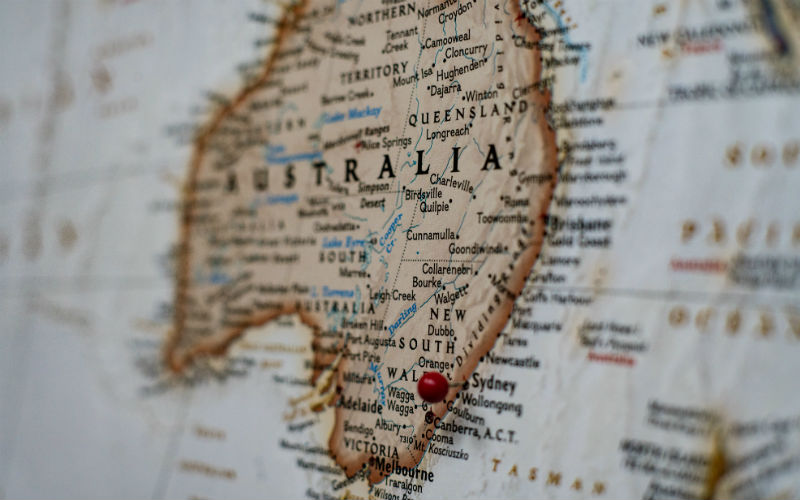A 13th cash rate rise next month hangs in the balance, with the June quarter consumer price index set to reveal how well 400 basis points worth of rate hikes are working to return underlying inflation back to the 2-3% target.
Globally, inflation pressures have started to ease with the United States, United Kingdom, and Canada all showing signs of cooling.
The news on inflation in Australia is also improving. The RBA and market economists are confident inflation peaked late in 2022, albeit remaining well above the target range of 2-3%.
Inflation is poised to fall to its lowest level since 2021, with economists expecting the June quarter results to show prices up by about 1% over the past three months.
But because inflation rose here about six months later than the rest of the world, we’re still behind - there’s more catching up to do.
Annualised headline inflation currently sits at 7.0% as of the March 2023 quarter - the underlying figure was 6.6%.
Notably, the more volatile monthly indicator showed a drop in inflation to 5.6% in the 12 months to May - the underlying figure was 6.4%.
Here are what some of Australia’s leading financial institutions predict for Q2 inflation.
See Also: Mortgage ‘belt’ that much tighter for Aussie borrowers compared to other countries
ANZ
ANZ Senior Economist Adelaide Timbrell said she is expecting both headline and underlying measures of inflation to have eased, putting pressure on the RBA to keep interest rates steady in August.
“The RBA will likely take comfort that inflation appears to be falling in line with, or a touch faster, than its May forecasts,” Ms Timbrell said.
“While the August meeting is live, an inflation outcome around our forecast [6.2%] would support our expectation that, on balance, an extended pause from the RBA is now most likely.”
CommBank
CommBank Economist Stephen Wu said there is clear evidence the rate hikes are working to slow the economy and contain inflationary pressures.
“Given the highly indebted household sector in Australia, scheduled mortgage repayments in May increased to around their historical peak of 9.4% of household disposable income,” Mr Wu said.
“We expect headline consumer prices [to rise] by 0.9% over the quarter. That would represent a further easing in the quarterly inflation pulse and would also see the annual rate fall to 6.1%, from 7.0% in quarter-one '23.”
Meanwhile, CommBank economists have pencilled in a 25 basis point hike in August, the last of the cycle.
“A material undershoot of CPI, however, could shift this view,” Mr Wu said.
NAB
NAB Head of Market Economics Tapas Strickland expects the June quarter CPI result to show greater evidence of sticky services inflation, adding further risks to the RBA’s aim of returning inflation to 3% by mid-2025.
“While we pencil in trimmed mean inflation of 1.1% quarter-on-quarter and 6.0% year-on-year to be in line with the RBA’s May SoMP [statement of monetary policy] of 6.0% year-on-year, we expect the details around services to be less favourable, flagging the risk of a slower return of inflation to target than in the May SoMP profile,” Mr Strickland said.
“Combined with our expectations of a high CPI print the following quarter as pass through to final prices from the national award/minimum wage and higher electricity take effect, the RBA will likely need to hike rates another two times.”
Westpac
Westpac Senior Economist Justin Smirk said a moderation in price increases for housing costs, specifically electricity rebates, was partly driving the ease in inflation.
“Westpac is forecasting a 1.1% rise in the June quarter taking the annual pace down 0.7 points to 6.3%,” Mr Smirk said.
“Overall, the June quarter CPI is set to confirm that inflationary pressures peaked in late 2022 and continues to moderate as we move through 2023.
“However, it will also continue to highlight that core inflation remains significantly above the top of the RBA’s target band and is not likely to return to being within the band any time soon.”
Last week’s unemployment data suggests the RBA can take out a little more inflation reducing insurance, given the unemployment rate dipped slightly to 3.5% for June.
June retail trade figures released on Friday will also be factored into the RBA’s cash rate decision in August.
Prior to tomorrow’s CPI data, market pricing ascribes a 57% chance of a hold at next week’s monetary policy meeting.
Image by Adnanta Raharja via Unsplash



 Harry O'Sullivan
Harry O'Sullivan
 Harrison Astbury
Harrison Astbury



